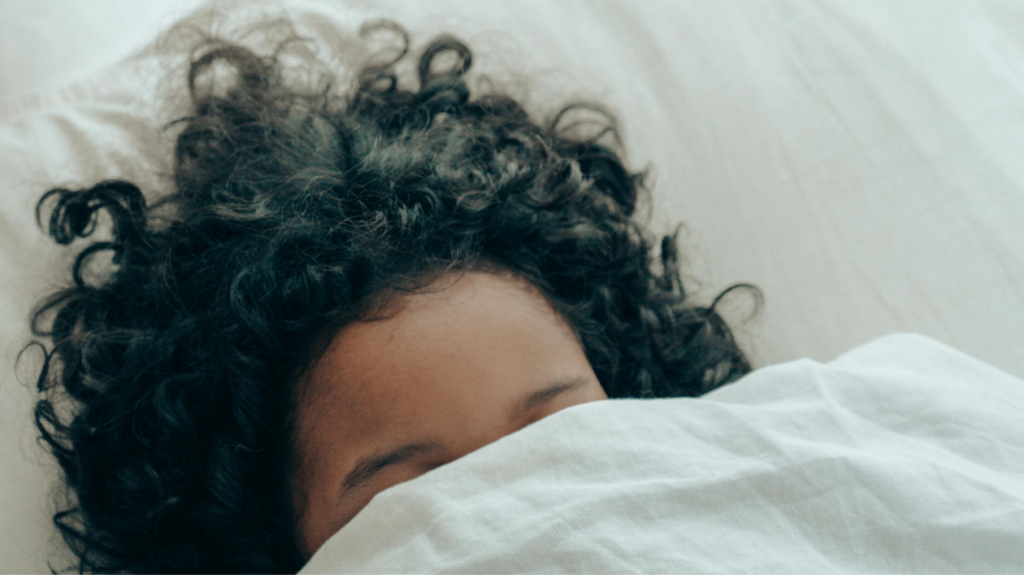
Sleep-wake disorders or simply sleep disorders are medical conditions that affect a person’s normal sleep patterns. These disorders can affect the amount, quality, and timing of sleep, leading to difficulties in falling asleep, staying asleep, or waking up too early and not feeling refreshed. Sleep disorders can have a significant impact on a person’s overall health and well-being, as sleep is essential for physical and mental health.
SYMPTOMS OF SLEEP DISORDERS
It is common to experience problems with sleep from time to time. However, you might be dealing with a sleep disorder if you consistently experience the following symptoms. The symptoms include both nighttime and daytime:
- Persistent difficulty in sleeping.
- Snoring or breathing difficulties during sleep.
- Waking up frequently during the night and having trouble going back to sleep (sleep maintenance insomnia.)
- Sleep paralysis when you feel conscious after waking but can’t move.
- Waking up feeling tired or groggy, despite having slept for enough time.
- Having trouble focusing, paying attention, or remembering things due to poor sleep.
- Excessive daytime fatigue, feeling sluggish, or lacking in energy.
It’s important to note that experiencing one or more of these symptoms does not necessarily mean you have a sleep disorder. However, if you consistently experience these symptoms and they are affecting your daily life, it may be worth discussing them with a healthcare professional.
CAUSES OF SLEEP DISORDERS
The causes of sleep disorders can vary depending on the type of disorder. However, here are some of the most common causes of sleep disorders:
- Genetic Factors: or predisposition.
- Lifestyle Factors: such as shift work, frequent travel, or irregular schedules.
- Medications: Some medications can have side effects that disrupt sleep patterns.
- Substance Use: Alcohol, caffeine, nicotine, and other substances can interfere with sleep.
- Mental Health Conditions: such as depression, anxiety disorders, and post-traumatic stress disorder (PTSD), can interfere with sleep.
- Age: As people age, they may experience changes in their sleep patterns, including less deep sleep and more frequent awakenings.
- Hormonal Changes: Hormonal changes, such as those that occur during pregnancy, menopause, or menstruation, can affect sleep patterns.
TYPES OF SLEEP DISORDERS
There are several types of sleep disorders, each with its own set of symptoms and causes. Some of the most common types of sleep disorders include:
Insomnia
Insomnia is the most common type of sleep disorder, characterized by difficulty falling asleep, staying asleep, or waking up too early and not being able to fall back asleep.
Insomnia can take many forms. Two main types of insomnia are acute insomnia and chronic insomnia.
- Acute insomnia is short-term insomnia that lasts for a few days, or weeks and symptoms may fade on their own as time passes. It is often triggered by stress, life events, or changes in sleep patterns.
- Chronic insomnia is long-term insomnia that occurs at least three times per week and lasts for longer than six months. It can be caused by underlying health conditions, mental health disorders, medications, or other factors.
Insomnia is more likely found in older people and biological females. Treatment for insomnia depends on the underlying cause and may include a combination of lifestyle changes, behavioral therapy, and medication like Cognitive Behavioral Therapy for Insomnia (CBT-I), practicing good sleep hygiene, and short-term use of sleeping pills.
Sleep Apnea
Sleep apnea is a serious sleep disorder characterized by pauses in breathing or shallow breathing during sleep. These pauses can last from a few seconds to minutes and can occur multiple times per hour. Repeated pauses in breathing can lead to disrupted sleep, resulting in daytime fatigue, excessive daytime sleepiness, and difficulty concentrating. Over time, untreated sleep apnea can increase the risk of serious health conditions, including high blood pressure, heart disease, stroke, and type 2 diabetes.
Treatment for sleep apnea depends on the type and severity of the condition. Continuous positive airway pressure machine (CPAP) therapy is often used. Other treatments may include positional sleep aids or dental devices.
Restless Legs Syndrome
Restless Legs Syndrome (RLS) is a neurological disorder characterized by uncomfortable sensations in the legs that cause an irresistible urge to move. These sensations are often described as crawling, tingling, or itching, and they typically occur when the person is at rest, such as when sitting, lying down, or sleeping. RLS can lead to difficulty falling asleep or staying asleep, resulting in daytime fatigue and other sleep-related problems.
RLS is associated with certain medical conditions, such as iron deficiency, kidney failure, and peripheral neuropathy, as well as certain medications. Treatment may include increasing iron intake, lifestyle changes, such as regular exercise, and avoiding caffeine and alcohol.
Narcolepsy
Narcolepsy is a sleep disorder characterized by excessive daytime sleepiness, sudden episodes of muscle weakness (cataplexy), hallucinations, and sleep paralysis. People with narcolepsy often have difficulty staying awake for long periods and may experience sudden sleep attacks during the day, regardless of how much sleep they get at night.
The common treatment includes medications such as stimulants to help with daytime sleepiness, antidepressants to help with cataplexy, and medications to help with hallucinations and sleep paralysis. Lifestyle changes, such as maintaining a regular sleep schedule, taking short naps during the day, and avoiding caffeine and alcohol, can also help manage symptoms.
Parasomnias
Parasomnias are a group of sleep disorders that involve abnormal behaviors, movements, emotions, perceptions, and dreams that occur during specific stages of sleep including non-rapid eye movement (NREM) sleep and rapid eye movement (REM) sleep.
Some common forms of parasomnias include:
- Sleepwalking (Somnambulism) involves getting out of bed and walking around while still asleep. It’s a common parasomnia. Sleepwalkers may perform complex actions, without being aware of it.
- Sleep Talking (Somniloquy) involves talking during sleep. The content of the speech can range from gibberish to full conversations.
- Night Terrors (Sleep Terrors) are episodes of intense fear or dread during sleep. The terror can last from 30 seconds to 5 minutes. They typically occur in non-REM sleep and are often accompanied by screaming, thrashing, or other signs of extreme agitation.
- REM Sleep Behavior Disorder (RBD): RBD involves acting out dreams during REM sleep. This can include kicking, punching, or other violent movements.
Sleep Paralysis
Sleep paralysis is a phenomenon in which a person temporarily experiences an inability to move or speak while falling asleep or waking up. It occurs when a person becomes conscious while their body is still in a state of muscle paralysis that normally occurs during REM (rapid eye movement) sleep. This can be a frightening experience, as the person may be aware of their surroundings but unable to move or speak.
It sometimes has no identifiable cause. However, it is thought to be related to sleep deprivation, a symptom of narcolepsy or mental health conditions such as bipolar disorder, a side effect of some medications, or substance abuse.
Circadian Rhythm Disorders
Circadian rhythm disorders are a group of sleep disorders that involve disruptions in the body’s internal clock, which regulates the sleep-wake cycle and other daily rhythms. These disorders can affect the timing of sleep, the quality of sleep, and the ability to function during the day.
Common effects include insomnia or excessive sleepiness (hypersomnia) at inappropriate times, daytime fatigue and difficulty concentrating, and mood disturbances. Treatment for circadian rhythm disorders includes maintaining a regular sleep schedule, avoiding bright light exposure in the evening, avoiding stimulants like caffeine close to bedtime, melatonin, and light therapy.
In conclusion, sleep disorders encompass a wide range of conditions that can significantly impact an individual’s quality of life.
Sleep is crucial, as it plays a vital role in our overall health and well-being. Maintaining a regular sleep schedule, practicing good sleep hygiene, and seeking professional help when needed are key steps in managing and treating sleep disorders. By prioritizing sleep and addressing any underlying issues, individuals can improve their sleep quality and overall health.
Blog By : DEEBHA SITHTA

